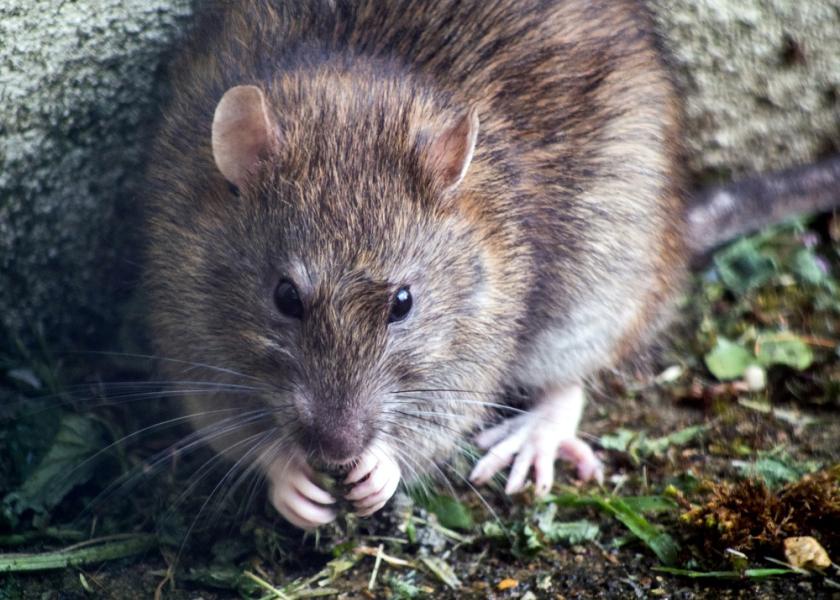You Dirty Rat … Rodent Control is Vital

In this time of heightened biosecurity awareness, the importance of an effective disease barrier system for rodent control in and around hog buildings can’t be overstated. Rodents, like other wild animals, insects and people, can spread – or accelerate the spread of – diseases from contaminated areas to uncontaminated areas via their droppings, feet, fur, urine, saliva or blood. Additionally, rodents around farm buildings are a food source that can attract predatory and domesticated animals that in turn may contribute to disease problems. Producers need to recognize the signs associated with rodent infestations and take the necessary actions to minimize the threats they pose.
Rats and mice can consume and contaminate feed and cause feed losses through the gnawing of holes in feed sacks and wooden bins, say the authors of an Extension paper on controlling rats and mice in swine facilities. Authors are Robert Timm, University of California; Rex Marsh, University of California, Davis; Scott Hygnstrom, University of Nebraska–Lincoln; and Robert Corrigan, Richmond, Ind., one of the nation’s foremost experts in rodent control.
House mice (Mus musculus), Norway rats (Rattus norvegicus) and roof rats (Rattus rattus) as a group are considered the most troublesome and economically important rodents in the U.S., according to the authors. These nonnative “commensal” rodents live under a variety of urban and rural conditions. They often thrive in and around farms and rural homes and sometimes inhabit open fields and agricultural crops, the authors write.
Dealing with rodents is a process
The authors assert that rodent control is a process, not a program. Because rodents are a never-ending threat, your control efforts must also be ongoing. Also, keep in mind that achieving “zero mice” may be impractical, even impossible, for several reasons: Rodents are prolific – in fact, a single female mouse can potentially produce 32 to 56 offspring annually; new rodents are constantly drawn to swine production facilities as a source of food and warmth; and they are excellent climbers and can squeeze through tiny openings or create their own. Sealing a building to exclude rodents is a difficult prospect, at best.
Norway rats will undermine building foundations and concrete slabs, the authors state. “Roof rats and house mice, in addition to Norway rats, are particularly destructive to building insulation. Most common types of insulation, including rigid foam and fiberglass batt, are susceptible to rodent damage. A rodent infestation can cause thousands of dollars in damage in a matter of months. Additionally, rodents frequently gnaw on electrical wiring causing equipment malfunctions, power outages and fires as a result of short circuits,” say the authors.
Effective control
“For effective control, we recommended an integrated pest management (IPM) approach that incorporates the timely use of a variety of cost-effective control methods, including: (1) sanitation, (2) rodent-proof construction and (3) population reduction,” the authors add. “The first two are preventive measures. When an infestation already exists, population reduction is typically needed. Reduction techniques include trapping, toxic baits and fumigation. Another important component of an effective IPM program is pest population monitoring. Records of trapping success and measures of rodent activity will help to determine the need for additional control efforts.
“Once ‘control’ is achieved, some pork producers tend to let their guard down and not pay much attention to rodent control for a couple of months,” the authors continue. “Unfortunately, this habit leads to undoing all the work that it took to control the rodents initially. Rodent control should be a regular and continual part of a pork production operation. Take an hour or two each month, after control has been achieved, to check and refill bait stations and inspect facilities for fresh rodent activity. Mark it on the calendar.”
Editor’s Note: To learn more about control methods, products, types of bait and bait placement, go here.







